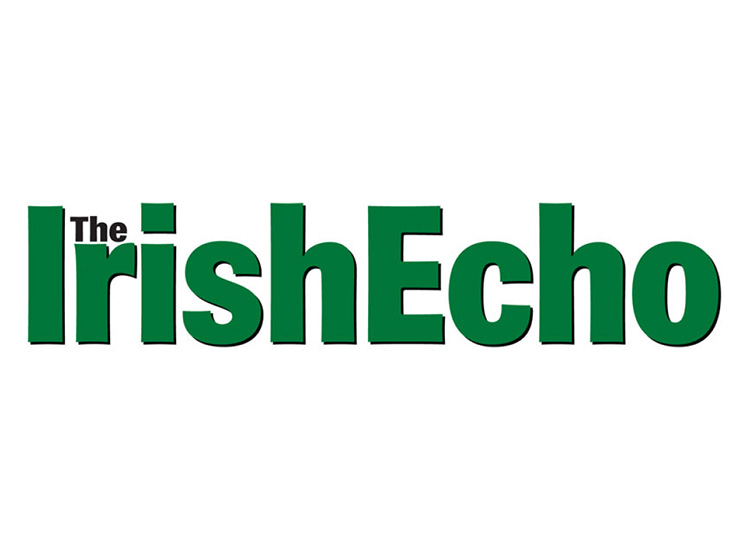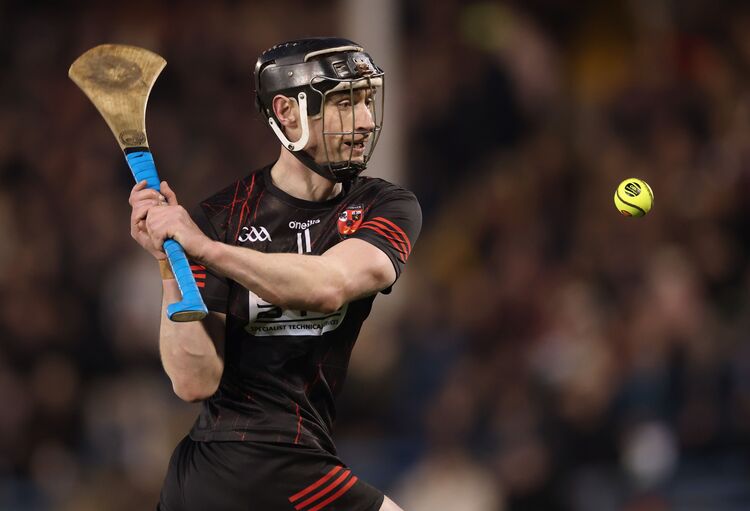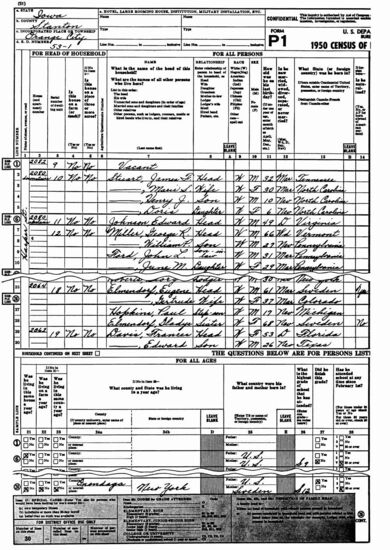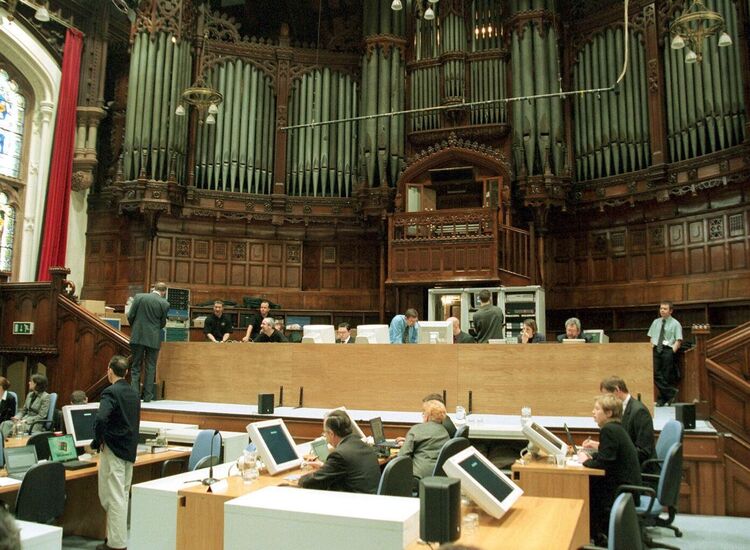The New York St. Patrick’s Day Parade has been making headlines since its birth 254 years ago. But the last twenty-five parades, while in the news for numerous reasons, have generated a consistent story associated with the argument over whether or not to include a gay and lesbian group with an identifying banner in the line of march. The story opens in 1991, a distant year that, given recent headlines, seems to be not so far in the past after all.
1991
Mary Holt Moore was the second woman grand marshal but the 230th parade would also be remembered for the attempt by the newly emerged Irish Lesbian and Gay Organization to secure a place in the line of march. The group was turned down by parade organizers but invited to march by a division of AOH members. The parade was marred by the behavior of some spectators who threw beer cans, coins and other objects at New York Mayor David Dinkins, members of AOH Div. 7 and ILGO, who were marching together as one unit. Some parade organizers turned their backs on ILGO and their fellow marchers as they reached the Fifth Avenue official reviewing stand. Rifts within the Hibernians and between the parade committee and the Hibernian leadership, were becoming visible. By June, relations between the AOH leadership and parade organizers deteriorated to the point that the parade committee chairman, Frank Beirne, was suspended from the order, and thus the parade committee, for refusing to cooperate with an AOH State Board inquiry.
1992
The battle over the shape and future of the parade reached the courts and there was talk of an AOH split, and even two parades. The New York State Board eventually secured the parade permit, but, as part of an agreement between itself and the County Board, the actual running of the parade was left to the County Board which had sued the State Board in court. As part of the agreement, parade chairman Beirne agreed to relinquish his chairmanship.
The Hibernians had more than an internal rift to deal with as they faced a federal lawsuit brought by New York City and ILGO resulting from the decision to exclude the gay group from the 231st parade. In the end, a federal judge declined to intervene and the parade stepped off in a snow shower headed by Grand Marshal Connie Doolan. Before the parade, ILGO staged its own march on part of Fifth Avenue, with the city’s permission.
1993
“Parade War Getting Nasty” was a front page headline in the Irish Echo six weeks before the 232nd march. New York City gave the parade permit to a recently formed group of Hibernians, the St. Patrick’s Day Parade Inc. This group supported ILGO’s inclusion in the line of march. The move infuriated the AOH leadership to the point that the AOH national president, George Clough, called for a Hibernian boycott of the parade. Fearing a “partitioned” parade, the ILGO-backing committee withdrew, thus leaving the field to the traditional parade committee that was linked to the AOH New York County Board. With only days to go before the parade, this group secured the parade permit in a federal court battle against the New York City Human Rights Commission. ILGO threatened a counter-march down Fifth Avenue and former parade committee chairman Frank Beirne, now being described as parade “coordinator,” called for marchers walking in the parade up the avenue to pray and carry rosary beads. Police Commissioner Ray Kelly banned the ILGO march, but the group protested nevertheless and 230 members and supporters were arrested. The parade stepped out in the rain without a grand marshal, but was headed by eleven people who would otherwise have been the grand marshal’s aides.
1994
Popular Queens Rep. Tom Manton was chosen as grand marshal for the 233rd consecutive parade. Manton’s elevation was announced by new parade committee chairman, John Dunleavy, even after other potential grand marshals were gearing up for an election. There were rumbles of discontent from parade-affiliated groups, most especially Emerald Societies, who were unhappy with a process that appeared to be now more of a selection than an election.
The parade itself passed into history in cold, clear weather. More than one hundred ILGO members were arrested after a street protest at Fifth Avenue and 42nd Street. Cardinal John O’Connor, in a homily at the pre-parade Mass in St. Patrick’s Cathedral, denied that the decision to bar ILGO from marching under its own banner was divisive or bigoted. “If it is a disgrace to be Irish, or a disgrace to be Catholic, I am proud to stand before you in disgrace,” he told the packed congregation.
1995
Cardinal O’Connor made parade history as the first Archbishop of New York to lead the parade as grand marshal. Parade chairman Dunleavy promised “one of the greatest parades ever” and indeed there was something of a new spring in the parade step in the aftermath of the IRA calling a cease-fire the previous August. ILGO went to court in an effort to protest its exclusion along the entire parade route. This time the group was opposed by New York City on public order grounds. U.S. District Court Judge John F. Keenan ruled that ILGO had the right to proclaim its sexuality and Irish heritage, but that such a right was not absolute. Barred from the parade route, ILGO again protested at 42nd Street and 91 members were arrested. Cardinal O’Connor led the 234th parade in brilliant sunshine.
1996
Oh what a difference a year made. The 235th parade stepped out against the backdrop of a renewed IRA campaign and, in response to the renewed violence, organizers dedicated the parade to peace in Ireland. Appropriately, the parade was headed by Grand Marshal Bill Flynn, who had risen to prominence in as a member of the Irish American peace delegation to the North. ILGO went to federal court again, failed to secure entry to the parade route in order to protest, and then staged what was now an annual protest at 42nd and Fifth. Forty-three were arrested.
1997
One hundred years after feuding Hibernians ended a split and mounted one parade, an air of unanimity descended on the 236th parade, which was dedicated to the victims of the Great Hunger in Ireland. With Dr. John Lahey leading the parade as grand marshal, a minute’s silence descended on Fifth Avenue in memory of those countless victims. With the exception of a news helicopter overhead, that silence was absolute. ILGO again protested and made the point that their protest, like the parade, was now “consecutive” In their case, the seventh consecutive.
1998
A row erupted over the selection of former Taoiseach Albert Reynolds as grand marshal. A number of individuals and parade-affiliated groups were angry over the fact that Reynolds was from outside the U.S. Some claimed that he was not even a Hibernian, though the parade committee said that he was. Reynolds led the 237th parade under sunny skies and the “Pikemen” of 1798 were remembered from one end of the line of march – which included Sinn Féin’s Martin McGuinness – to the other. The line of march, published free in the Echo for over 40 years, was not forthcoming from the parade committee prior to the parade; neither was an explanation for its denial. ILGO, meanwhile, staged protest number eight. There were 14 arrests.
1999
A calm year by recent standards. Actress Maureen O’Hara turned out to be one of the most popular grand marshals of all time judging by crowd reaction along Fifth Avenue during the 238TH parade. ILGO was not so impressed by nostalgia and staged its annual protest. Seventeen were arrested. The Irish American weekly papers were again without the line of march.
2000
A new millennium for everybody was a tenth anniversary for ILGO. The group moved its street protest uptown to 59th Street to mark ten years of exclusion from the parade. Hundreds took part in the protest and about 70 were arrested. Down Fifth Avenue, however, the majority of people were noting an absence and a presence. The absence was that of an ailing Cardinal O’Connor from the reviewing stand outside St. Patrick’s. The presence was that of First Lady and New York Senate candidate, Hillary Rodham Clinton, who marched in the parade to as many boos as cheers. The 239th parade was led by Grand Marshal Dr. Kevin Cahill under snowy skies and again the line of march was denied the Irish weeklies.
2001
The 240th parade, now being run by the Bill Flynn-headed St. Patrick’s Day Parade Corporation, this according to the St. Patrick’s Day Parade and Celebration Committee, turned out to be the calm interlude before yet another storm. A growing showdown between the Hibernian national and state leadership and parade organizers was long-fingered until after the parade which was led by Grand Marshal Edward Malloy, and, following the death of Cardinal O’Connor, reviewed for the first time by Cardinal Edward Egan. ILGO stayed off Fifth Avenue this time, preferring to camp alongside the parade route a couple of blocks north of St. Patrick’s. The Echo, helped by marching groups in the parade, printed a line of march of its own. The parade passed without major incident. However, within weeks, differences between the Hibernian leadership and parade organizers over matters such as the permit and finances erupted into full public view with the national and state leadership moving to cut all ties with both the parade committee and corporation.
2002
It was a case of rainy skies but rain holding. The parade itself seemed to be on a similar knife edge but this was not entirely due to the gay marching issue, indeed far from it as this was the first parade after 9/11. Cardinal Edward Egan became the second archbishop to step off as grand marshal and his spiritual power was matched by the political with the likes of Michael Bloomberg, George Pataki, Rudolph Giuliani, Hugh Carey, ED Koch, now Senator Hillary Clinton and Congressman Joe Crowley taking to the avenue. Rep. Crowley marched in memory of his cousin, firefighter John Moran. Irish President Mary McAleese was on the reviewing stand. The gay marching issue was in the shade but two groups protested. At 54th and 5th fifty ILGO members rallied under the banner “All our heroes gay and straight.” At 59th and 5th fifty members of a new group, Irish Queers held a silent black flag protest aimed at Bloomberg who had said he would not march in exclusionary parades. Firefighters had wanted a fire truck to lead the parade but the parade committee said no. ILGO had banners with fire trucks on them stating “they won’t let us in either. This parade would be especially remembered for the 343 flags, signifying the FDNY dead of 9/11 carried by probationary firefighters. At one point the entire parade turned to face south to where the world trade towers had stood only months before. There was a minute’s silence that all present will never forget
2003
A warm sunny day, 62 degrees, though under the clouds of war. The Fighting 69th seemed to be marching with extra urgency. President Bush was to address the nation that evening about Iraq. The grand marshal was James O’Connor of the Ford Motor Company. Mayor Bloomberg and Police commissioner Ray Kelly marched as did other political luminaries including George Pataki, James McGreevy, Ed Koch, and Rudy Giuliani. There was a protest staged by ILGO but it was relatively low key. The parade dedicated to five deceased chairmen of the parade committee including the now deceased Francis Beirne who had stood against the first efforts of ILGO to march in the parade under its own banner back in 1991.
2004
There was snow, though the conditions were better than the day before. The grand marshal was Tommy Gleason who began his parade by calling out “For G Company, 23rd” – a reference to his World War II Marine Corps comrades. One participant in the parade was named Sam Maguire, not a person but the All Ireland trophy. The Echo duly reported: “The exclusion of gay groups marching under their own banner is not the visible hot potato it was a few years ago. The ILGO was not noticeable in this parade though the group’s place on the sideline was taken by the kindred organization, Irish Queers. A small band of IQ protestors took up position opposite the Plaza Hotel and gave interviews to reporters in search of a line that wasn’t based on green paint, or the white weather.”
2005
The 244th parade was headed by grand marshal Denis Kelleher. The 69th was away in Iraq so just a few members marched backed up by members of the famed regiment’s veterans’ corps. Many members of the FDNY wore Green Berets in defiance of a departmental order. It was a rather Irish day weather-wise, with a winter morning followed by a spring afternoon. Irish Queers held a St. Patrick’s Eve demonstration outside St. Patrick’s Cathedral and a “Black Flag” protest on parade route.
2006
The fighting 69th was back in town “wounded but unbowed” as a report put it. The members of “Taskforce Wolfhound,” drawn from New York and Louisiana, marched proudly to loud applause and cheering. The grand marshal was Timothy Rooney. The weather forecast was dire but the day was fine. Irish Queers protested and City Council Speaker Christine Quinn mounted a “button boycott.” Quinn, herself gay, had wanted to march with a lapel button in support of gay rights, but this idea was rejected by parade organizers.
2007
There was a lot of snow and slush on the avenue after a bad day before the parade but the march itself went off on a sunny though chilly day. The biggest flap was between firefighters and parade organizers over the former’s place in line of march. Firefighters, mostly FDNY members, were moved back in the line of march after New Orleans firefighters the year before had unfurled a banner thanking FDNY for post-Hurricane Katrina help. The parade committee said the parade had been held up for 35 minutes as a result. The grand marshal was former Boston mayor Ray Flynn. The New York City Council paraded without Speaker Christine Quinn who was marching in Dublin. Irish Queers again protested the denial of a chance to march under their own banner.
2008
Fine weather greeted marchers led by grand marshal Tommy Smyth. New York Governor Eliot Spitzer was named in the line of march but he had quit the governorship by the time the parade was just a couple of hours old. New Jersey stand in governor Richard Codey stepped in to host the traditional governor’s breakfast at the Waldorf. Mayor Bloomberg ended up skipping the parade as he headed for Albany and the swearing in of new governor, David Paterson. Commissioner Ray Kelly led the city’s representation in the parade. Irish Queers protested at IQ at 57th St. but given the day that was in it their protest attracted less attention than previous years.
2009
It was a case of blue skies over the green line in a parade led by grand marshal Michael Gibbons. The 69th, who had been away again, this time in Afghanistan, were back home. Mayor Michael Bloomberg marched as did New York Governor David Paterson. The Echo reported that Irish gay activists staged what is now “their hardy annual protest on 57th St. and Fifth Avenue. City Council Speaker Christine Quinn and the council itself stayed away.
2010
The parade, the 249th consecutive, stepped off in warm sunshine. The parade route still stretched from 44th to 86th Streets but the city was signaling that it wanted a shortened parade route. The grand marshal was Ray Kelly. Ever a man of action, on his way to Mass at St. Patrick’s – the first to be celebrated by new archbishop, Timothy Dolan - he tended to a woman knocked down by a bicycle. The weather brought out huge crowds. Irish Queers mounted their picket just north and across the avenue from St. Patrick’s. Speaker Quinn and the City Council continued their boycott.
2011
A landmark parade, the 250th consecutive. Grand Marshal Mary Higgins Clark led the way in a horse-drawn carriage under sunny skies. As had been the case for twenty years there were gay activists at the 250th protesting their banner-topped exclusion from the parade.
2012
A sunny and warm day greeted the grand marshal, Francis X. Comerford. The parade was dedicated by the organizing committee to the nation’s veterans, now returning in significant numbers from the battlefields of Iraq and Afghanistan. The parade was reviewed by Archbishop Dolan, now in his cardinal’s red hat. The route was shorter, ending at 79th and 5th but this prompted argument because the end fell shy of the American Irish Historical Society. Irish queers mounted their annual protest. Speaker Quinn and the city council were again absent.
2013
Another one of those Irish days, though this time a dry morning was followed by a snowy afternoon. The grand marshal was Al Smith IV. Taoiseach Enda
Kenny marched with United Irish Counties. Michael Bloomberg, Andrew Cuomo, Senator Charles Schumer and Congressman Peter King all marched. Christine Quinn, now a mayoral candidate, stayed away again. Irish Queers staged their traditional picket. Congressional sequester cuts meant that army brass, including the Chairman of the Joints chiefs of Staff, Martin Dempsey, has to skip the parade.
2014
The parade took place in frigid conditions. Grand Marshal Jack Ahern, who was ailing, took to the parade route in a vintage car. New York’s new mayor, Bill de Blasio and the City Council stayed away, and sponsors Guinness and Heineken pulled out at the last minute as a result of a reinvigorated row over the exclusion of a gay banner from the parade. De Blasio, however, did attend Mass at St. Patrick’s. Police Commissioner Bill Bratton marched as did Taoiseach Enda Kenny. Irish Queers staged their protest.
2015
The 2015 parade, at the time of writing, will include a gay group marching under its own banner for the first time and parade sponsors, not least Guinness, have renewed support. But Mayor de Blasio and the City Council are not expected to march because the invited gay group, made up of NBC employees, is not, in their view, representative enough of the Irish and Irish American community. Irish Queers is planning to protest. So after 25 parades featuring an annual standoff over the matter of an identifiable gay marching group, there has been progress and change, enough for some, not enough for others.
Compiled by Ray O’Hanlon








